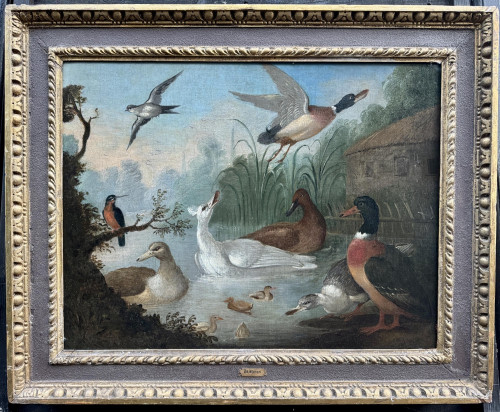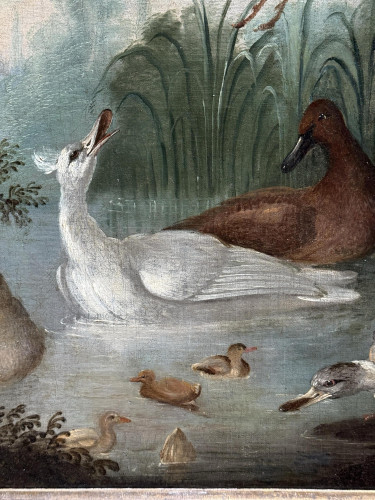Antique English 19th century marine scene
REF: 2419
Painter
Outstanding English late 18th / early 19th century marine scene by one of Britain's best known and sought after painters.
William (or Wiliam) Anderson (1757 – 27 May 1837) was a Scottish artist specializing in maritime and patriotic themes. He was well-regarded for his detailed and accurate portraits of ships under sail, exhibiting his works annually in London between 1787 and 1811 and then occasionally until 1834. Anderson influenced other artists, notably John Ward and others of the Hull school.
Anderson's early life is obscure, but he is known to have trained as a shipwright before moving to London to become a maritime painter when he was about 30. His training served him well as a painter, providing "a practical nautical knowledge" of his subjects. He earned a reputation for "accuracy and refinement of detail" and was admired for his bright, clear colours. He worked in both oils and watercolours.
He based his style on that of well-known Dutch maritime painters of the 17th century. He first exhibited at the Royal Academy in 1787 and the Royal Institution in 1810, and continued to exhibit annually until 1811. He then exhibited intermittently until 1834.[6] His best work was executed in the years 1790–1810, during the French Revolutionary and Napoleonic Wars, at which time the demand for naval paintings was high. His painting was not restricted to marine subjects and included an exhibit in 1822 of a painting depicting the Battle of Waterloo. Like other artists of the time, Anderson's paintings of marine incidents were often based on sketches by participants and were bought by individuals who had risen in social standing and wealth during the wars.
Commissions that took Anderson back north introduced him to the Hull school of painters, notably influencing the young John Ward (1798–1849), who copied at least one of Anderson's paintings. He was also a friend and possibly a collaborator of the painter Julius Caesar Ibbetson (1759–1817). His work was influenced by his travels in the North, which led to depictions of Berwick-on-Tweed and Tynemouth. His last exhibit was of Lord Howe's fleet at Spithead at the Royal Academy in 1834, the last of 45 paintings that he exhibited there. He died in London on 27 May 1837.
This piece is framed in its original frame and upon taking it out of its frame to dust it off a signature and inventory number was found signed in black ink.
The piece is in outstanding condition and has been recently revarnished.
- Height 20.32 cm / 8 "
- Width 25.4 cm / 10 "
RELATED ITEMS



























